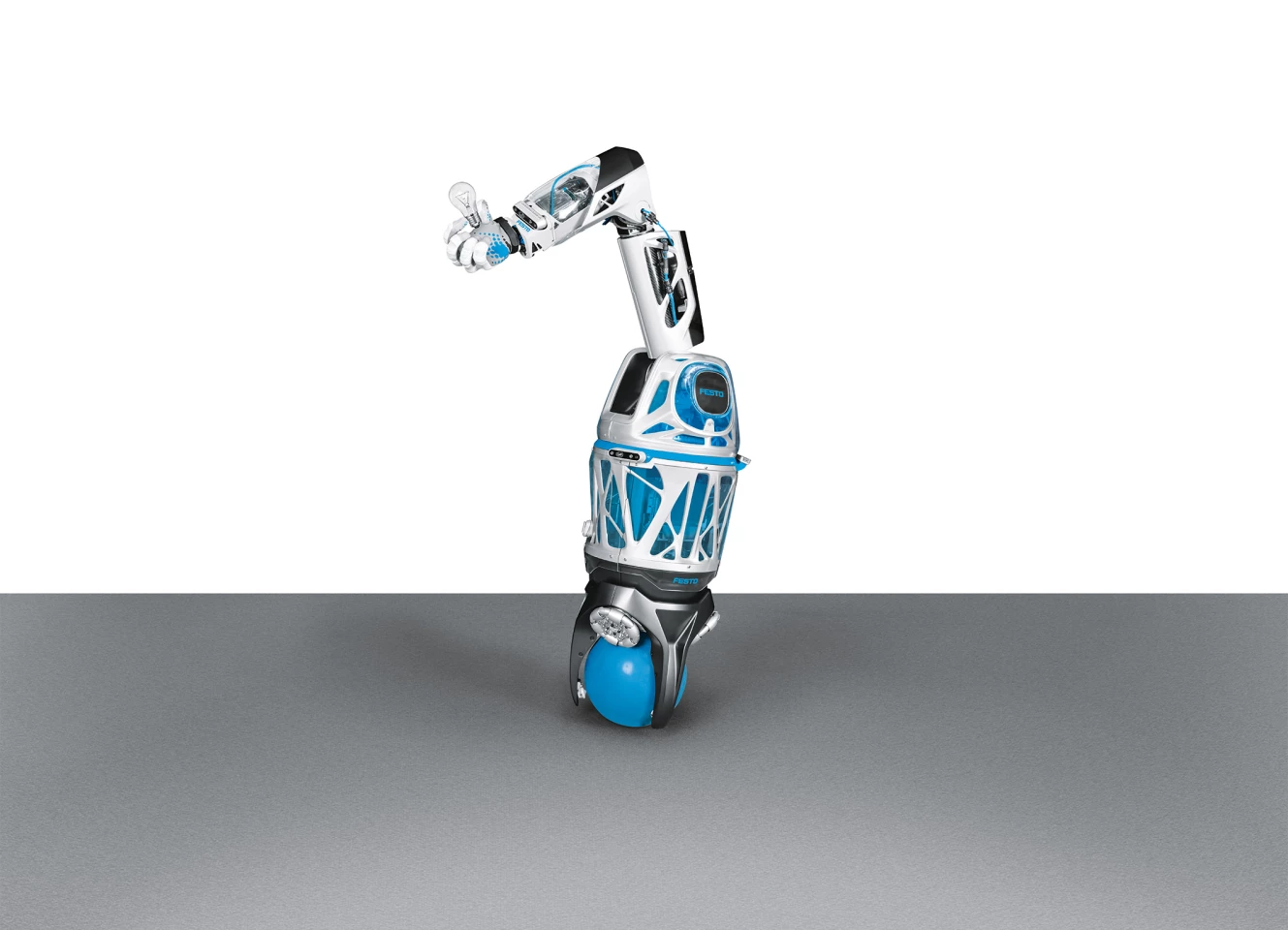German electrical automation company Festo has good form for pushing the envelope in robot development, previously showing off bio-inspired bot versions of ants, a kangaroo, flying penguins and more. Now the firm's engineers have revealed the latest developments, including aerobatic BionicSwifts.
Each of the five robo-birds developed by Festo's Bionic Learning Network has a wingspan of 68 cm (26.7 in), a body length of 44.5 cm (17.5 in) and tips the scales at 42 g (1.48 oz). Inside the body, Festo has crammed in the wing-flapping mechanism and control components, radio and localization tech, a brushless electric motor, two servos, a battery and the gearbox.
For the impressive wings, individual foam lamellae are connected to a carbon quill, which are in turn attached to the wing structure in a similar fashion to what you'd find on actual birds. When the wings flap down, the lamellae close ranks to give the robo-bird lift, but they fan out during the upstroke to allow air through the wings, requiring less force to pull the wings up. And this all adds up to give the BionicSwifts a better flight profile than previous wing-beating designs, according to Festo.

The flying bots can't fly in any old room though, only one that's had radio modules installed to serve as location anchors. Each of the birds has a radio marker that sends signals to the anchors so that its exact position in the room can be tracked by a computer that acts as a navigation system for setting up pre-programmed routes.
This caters for precision formation flying without crashing into each other or anything else in the room, and should a flight path be interrupted by such things as wind or thermals, the birds are capable of making autonomous corrections, even if the path ahead is obscured by an obstacle.
As is usual for Festo's demonstrations, the engineers have a practical real-world application in mind when developing the prototypes, and in this case the aim was to showcase a camera-free indoor 3D navigation system that could find use in the automated factory of the future. But for now, sit back and enjoy a video of the BionicSwifts doing their thing.
Festo's technical and education arm Didactic has also presented a bio-inspired robotic flower construction kit, developed in cooperation with SkySpirit. Based on mimosa and water lilies, the Bionic Flower opens and closes its petals in response to touch, proximity or light.

The kit is destined for the classroom to support STEM (Science, Technology, Engineering, and Math) education, where one flower is assigned to up to three students aged 10 or above. After building the flower, movement and lighting effects can be controlled using Wi-Fi-enabled smartphones, tablets or computers.
A graphic coding interface called Open Roberta can be programmed into the microcontroller, or more experienced students can write their own code in C++. And teachers can download supporting material free of charge from the Bionics4Education website.
Another collaboration, this time with ETH Zurich, has also resulted in an autonomous BionicMobileAssistant sporting the next generation of the BionicSoftHand. Looking to a future where production line operatives and robots work closer together, the setup is made up of a mobile robot base, and electric robot arm and the BionicSoftHand 2.0 module.

The ballbot base not only allows the BionicMobileAssistant to keep its balance, but also to move in any direction, which it can do autonomously. The hand sits at the end of a lightweight robot arm and features pneumatic fingers and an opposable thumb comprising bone-like structural elements and flexible bellows surrounded by knitted fabric.
Engineers have improved on the lateral swivel range of the thumb and index finger for greater precision, and the hand can move back and forth, in addition to left and right, thanks to a 3D-printed wrist rocking two degrees of freedom.
Though this prototype has been designed for the factory floor, it could also undertake a service robot role, carry out inspections, perform maintenance or repair tasks or make data measurements. The video below has more.
Source: Festo













